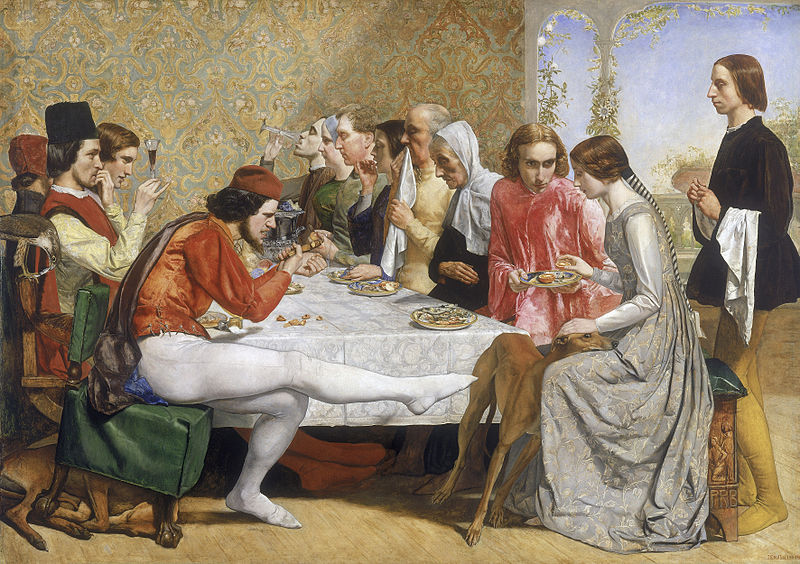Mostly, painting has many layers of stories. One picture may bring many layers of narratives and other materials alike. Some paintings, like ‘Isabella (1849), a creation of John Everett Millais, have a multi-layered story, which brings many unfamiliar things into the dialogue. One painting has many roots that went into literature, poetry and that time, society.
John Everett Millais (1829 – 1896) was an English painter and illustrator who founded the Pre-Raphaelite Brotherhood, a group that rejected Mannerist- Raphaelite mechanistic approach. Millais, with a group of painters, poets, and art critics, founded Pre-Raphaelite Brotherhood in 1848.
Pre-Raphaelite and Isabella
‘In the art history of this century, probably no movement has created so great a sensation as that which is commonly known as Pre-Raphaelitism. For years it was on everybody’s tongue and in every newspaper of the day. After the excitement it occasioned had died out, numerous pens traced its history according to their lights. Still, to this day, the facts are known to very few. I have them from the best possible authority, the originators themselves, my father (John Everett Millais) and Mr Holman Hunt, write John Guille Millais, son of John Everett Millais, in a book titled, ‘The Life And Letters Of Sis John Everett Millais.’ (1899).
The above words are enough to understand what Pre-Raphaelitism is and the impact of the modern art movement. Pre-Raphaelitics artists were influenced by illustrations of 1920 and 30s German artist Mortize Retzsch, which helped them create a distinctive style, rejecting the Raphaelitics style and composition.
In Millais’s works, Isabella is essential to work in both an artistical and movement sense because this painting brings the idea of what Pre-Raphaelitism meant. The story of Isabella goes back to John Keats (1795-1821) and a story by the Italian writer Boccaccio (died 1375). The thought of this painting comes from the literature of two distinct periods and what they bring a love story. Isabella was a sister of wealthy Florentine merchants. She had fallen in love with her brother, poor apprentice Lorenzo. What happens after their ‘Love Story’ becomes a tale of tragedy? Her brother killed Lorenzo and was buried somewhere. Hence, Lorenzo’s body is found by Isabella, who cuts off his head and buries it in a pot of basil, which she waters with her tears.
In this painting, the artists provide some links to the tragedy; a pot of herbs in the backdrop, one guy, assumed that one is her brother aiming to kick Isabell’s dog, while the lovers share a blood orange, symbolising the latter spilling of Lorenzo’s blood. In this painting, the artist brings the aftermath of Lorenzo’s murder, which is not visible in this painting. This was when Isabella’s brothers realised the love relationship between the two youngsters. What they share is not a glass of wine; it’s their love. After this gathering, Isabella’s brothers decide to kill Lorenzo to marry Isabella to, a wealthy nobleman. Why Isabella is wearing a grey dress and why she handed a blood orange on a plate to doomed Lorenzo symbolises the murder and the sorrow, and the blood orange may depict, referring to Isabella’s action of cutting off Lorenzo’s head and burying it in a jar of basil, which she waters with her tears.
“O may I never see another night,
Lorenzo, if thy lips breathe not love’s tune.”, writes John Keats in Isabella or The Pot of Basil. They are in love. They want each other’s presence, care, and love. But Isabella’s brothers cut them off. In Isabella’s paintings of Millais, artists bring the historical subject, as the Pre-Raphaelites defined themselves as a reform movement, and the element of mimesis, imitation of nature.
Feature image credit: Google Art and Culture

Krispin Joseph PX, a poet and journalist, completed an MFA in art history and visual studies at the University of Hyderabad.






